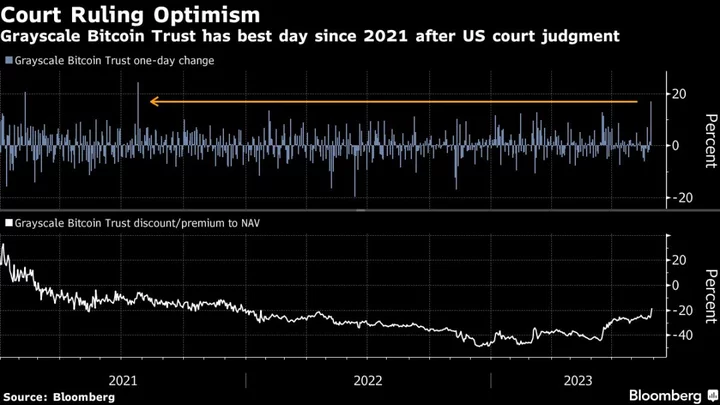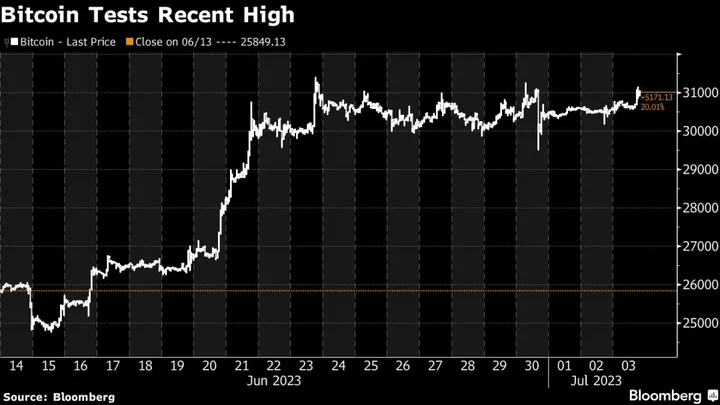
UK Heads for Another Sweltering Summer Driven by Global Warming
This summer in the UK is expected to be hotter than normal, though temperatures aren’t forecast to break
2023-06-09 01:48

EASTEC 2023, The Northeast’s Largest Manufacturing Trade Show, Unites Manufacturing Ecosystem
WEST SPRINGFIELD, Mass.--(BUSINESS WIRE)--May 24, 2023--
2023-05-25 01:18

Why you should be using a VPN with your iPhone — plus our top VPN picks
Our top VPN recommendations: BEST SERVER NETWORK ExpressVPN (1 year + 3 months) $6.67/month (save
2023-09-13 05:24

Solar Manufacturing in the US Is Facing a Bleak Future, Analysts Warn
Despite the generous tax breaks they are receiving from the Biden administration, many US companies planning to build
2023-07-24 21:46

Vantage Data Centers Announces Second Campus in Cyberjaya
DENVER & SINGAPORE--(BUSINESS WIRE)--May 16, 2023--
2023-05-16 20:29

BOE’s Catherine Mann Says UK Government Needs Longer-Term Agenda
A Bank of England policy maker urged the UK government to move economic policy away from being an
2023-06-12 08:22

Battery prices plummet as electric cars approach ‘tipping point’
The cost of batteries fell by nearly 10 per cent in August, taking them past a key milestone that is seen by energy analysts as a “tipping point” to supercharge the transition to electric vehicles. The price of lithium-ion battery cells, which power everything from smartphones to the International Space Station, fell below $100/ kilowatthour (kWh) last month – a 33 per cent drop from March 2022 and an 8.7 per cent month-on-month drop. Energy analytics firm Benchmark Mineral Intelligence, who compiled the figures, noted that battery pack prices need to reach $100/kWh for electric vehicles to reach price parity with fossil fuel-burning vehicles. “Decreasing cell prices could allow [manufacturers] to sell mass market electric vehicles at comparable prices to internal combustion engine vehicles, with the same margin, improving the attractiveness of the EV transition for both consumers and automakers,” said Benchmark analyst Evan Hartley. “Falling cell prices are of particular concern for companies investing in cell production outside of China, particularly when there is already concern surrounding the profitability of factories in regions such as Europe.” The drop in price could also have implications for other technologies, the report noted, including for solar and wind installations that need to store excess energy during periods of overproduction. “The energy and transport revolution continues,” energy analyst Gerard Reid wrote on LinkedIn. “Lithium battery cell prices are now below $100 per kWh, down 80 per cent in a decade. Going forward we will see even lower costs and better performance, which is why the death of the internal combustion engine is near.” The falling prices have been attributed to decreasing raw material costs, with lithium prices more than halving since the start of 2023. The price could continue to fall following the discovery of massive lithium deposits in recent months, most notably within an extinct supervolcano on the border of Nevada and Oregon. The McDermitt caldera could contain up to 120 million tonnes of lithium, according to recent estimates from geologists, which could potentially meet global battery demand for decades. Read More Battery breakthroughs are about to trigger a transport revolution Volcano discovery could power electric cars for decades, scientists say New invention will lead to ‘battery revolution’, scientists say Volcano discovery could power electric cars for decades, scientists say Scientists invent solar panels that work in a snow blizzard
2023-09-19 00:22

Amazon.com set to meet with FTC ahead of potential antitrust lawsuit -source
By David Shepardson and Diane Bartz WASHINGTON (Reuters) -Amazon.com is set to meet next week with the U.S. Federal Trade
2023-08-08 01:54

The World’s Biggest Bitcoin Fund Posts Best Day in Two Years on Court Ruling
The $17.4 billion Grayscale Bitcoin Trust rallied the most since July 2021 after a US court ruling potentially
2023-08-30 10:26

Nordson TEST & INSPECTION Showcases State-of-the-Art Inspection and Metrology Solutions at SEMICON Taiwan
MINNEAPOLIS--(BUSINESS WIRE)--Aug 28, 2023--
2023-08-28 21:22

South Florida storm dumps more than a foot of rain
By Rich McKay A fierce storm packing hurricane-force wind gusts dumped more than a foot (30.5 cm) of
2023-11-17 08:56

Apple and 4 More Quality Stocks to Buy After the Selloff
High-quality names Apple, Amazon, Starbucks, Netflix, and JPMorgan are all in the discount bin after a brutal September. Here's why it's time to buy.
2023-10-02 14:25
You Might Like...

The Best Business Desktops for 2023

This refurbished tablet-laptop hybrid is under $400

Why You Can't Get a Bomb Rush Cyberfunk Physical Copy

This $29 online course bundle teaches you critical Microsoft Excel skills

Bitcoin Bulls Are Testing The Year’s High Amid Light Market Liquidity

Andrew Tate: How much does 'rich' controversial influencer charge per interview?

Stellantis CEO’s Relentlessness Reemerges as Car Dynamics Shift

Krasdale Foods and PowerFlex Launch the Largest Solar System in the Bronx
